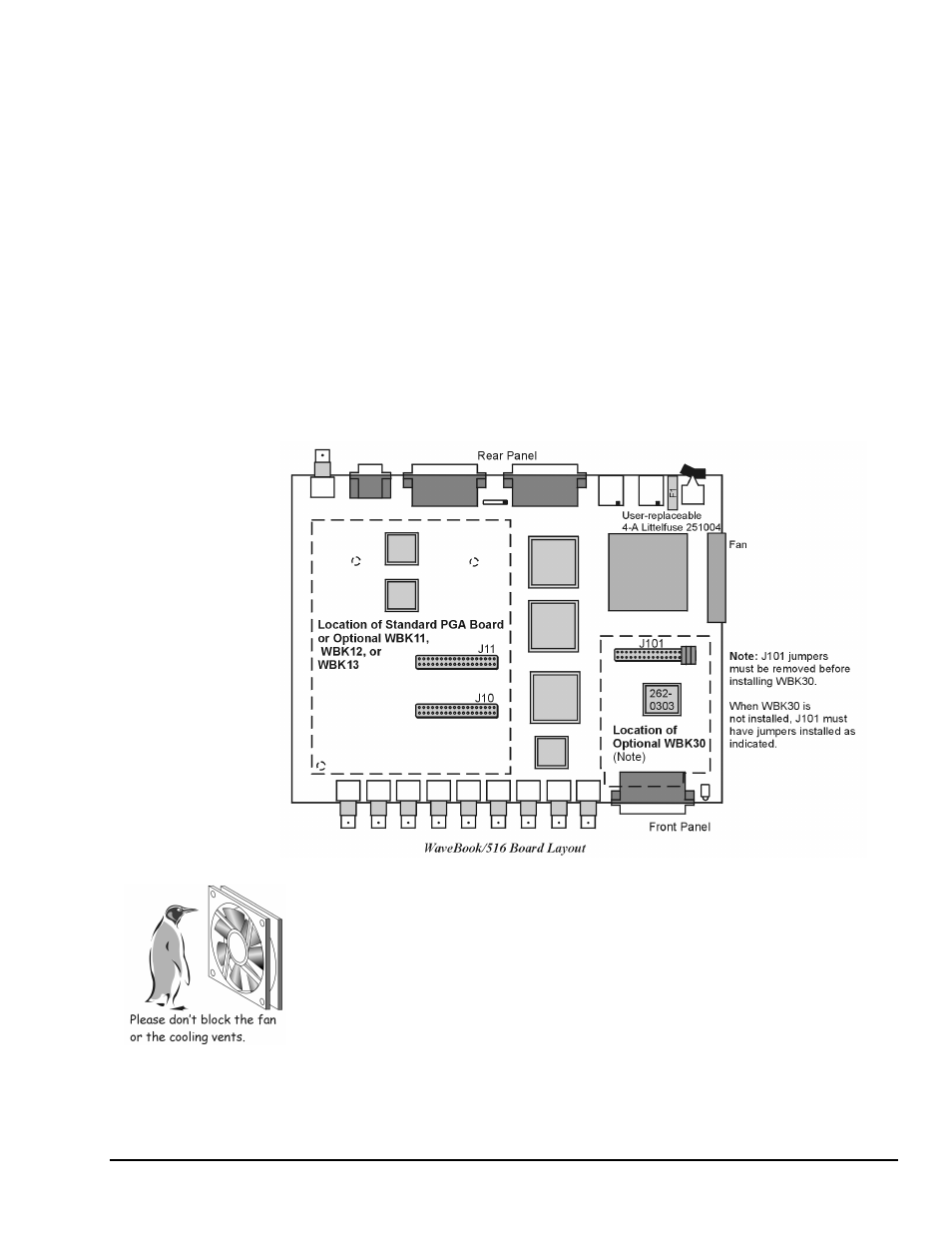Wavebook/516 fan – Measurement Computing WaveBook rev.4.0 User Manual
Page 51

WaveBook User’s Manual
06-08-01
WaveBook Operation Reference 4-5
WaveBook includes low-latency analog or TTL-level triggering. The low-latency analog trigger detector
examines the WaveBook input channel 1 to determine if a trigger has occurred. The selected low-latency
trigger is presented to the control and timing circuit that starts the acquisition after the trigger. The TTL
trigger is taken directly from the digital I/O port.
The control-and-timing circuit and the DSP work together to coordinate activities. Every sample time, the
DSP reads from the scan sequence table and accordingly programs the control and timing circuit for the
next sample. The control and timing circuit waits precisely until the start of the next sample, then selects:
input channel, PGA gain, level-shifter offset, and A/D input source. It conveys this information to any
attached expansion units and precisely controls the A/D conversion timing.
The EEPROM holds the calibration information needed for real-time sample correction.
The digital I/O port is read and written by the Digital Signal Processor to transfer bytes of digital data.
It may be used as a simple 8-bit input port or as a 32-address byte-wide I/O port.
The high-speed EPP/ECP interface circuit connects the WaveBook and any attached printer to the PC via
standard DB-25 connectors. When the WaveBook is active, the interface holds the printer in a stable state;
and when the WaveBook is inactive, the interface connects the PC to the printer.
Pin-header J101 allows the addition of the WBK30 memory option. The WBK30 is discussed later in this
chapter. Pin-headers J10 and J11 allow the addition of the optional WBK11, WBK12, or WBK13. These
cards can also be added toWBK10/10H/10A expansion modules.
WaveBook/516 Fan
WaveBook/516 components are air-cooled and cooling to ambient occurs as long as the
surrounding environment is cooler than the unit. When the unit becomes too warm for ambient
cooling, a temperature sensor signals the fan to run.
Fan speed varies according to WaveBook/516’s internal temperature. In cooler temperatures
the fan operates at lower speeds, thus reducing audible noise.
To allow for sufficient cooling, it is important to keep the fan and vents free of obstruction.
Note: The partial blocking of vents by splice plates (in stacked assemblies) does not
jeopardize unit cooling.
